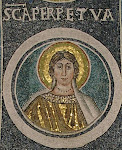The sexual activities of cruisers, she said, kept mostly to the bushes in the park, and the new signs sought to ensure that they stayed there.
"There are various groups of users of the park; people with small children who bathe on the beaches, those who walk their dogs, gays cruising and nature lovers," said Ms Koffijberg.
"Things are arranged so that each group can relax in their own area without intruding on each other."
But this doesn't mean the law against having sex in public has been revoked:
Ms Koffijberg said that while having sex in public was against the law, the park has been used for this purpose for so long that it has become "gedoog", a Dutch word for tolerating unwanted behaviour.
This seems very coy. The word "cruising" is used on the signs and is commonly not understood to include actual sexual acts. So the park is not actually officially sanctioning illegal behavior with these signs. The park is not sanctioning gay sex, only gay cruising. But, the municipal official understands that the cruising will be followed by sexual activities "kept mostly to the bushes". The implied reason is provided at the end of the article:
There had been recent complaints of gay bashing in the Slotervaart area, populated by a large group of immigrants of Muslim origin, with reports of robberies and violence against gay men in De Oeverlanden park.
This reminds me of the Telegraph news article I read about on Stand Firm last year requiring dog owners to keep their dogs on leashes so the dogs would not disturb the gay men having sex.
Mr van Grieken stresses that tolerance to "cruising" gays, aimed at protecting homosexuals from violence, will have "strict rules attached".
"Thus, condoms must always be cleared away, it must never take place in the neighbourhood of children's playgrounds and the sex must be restricted to the evening and night-time," he said.
In both cases, it seems that public sexual activity is being permitted and facilitated with the motivation being to protect gays against violence.




